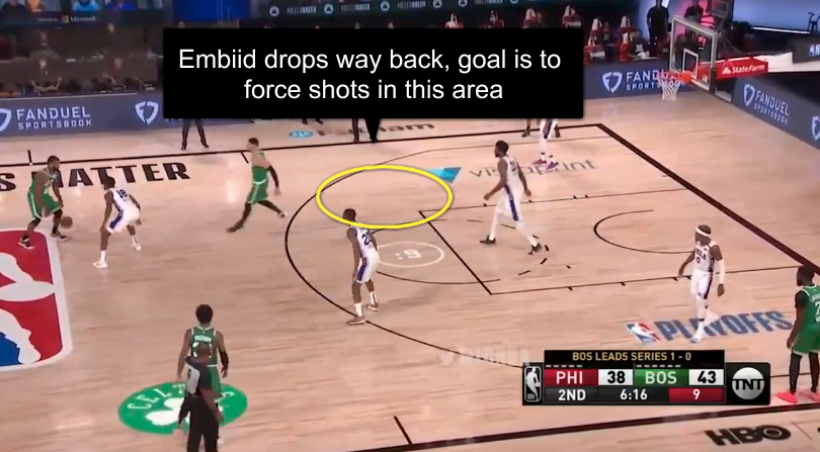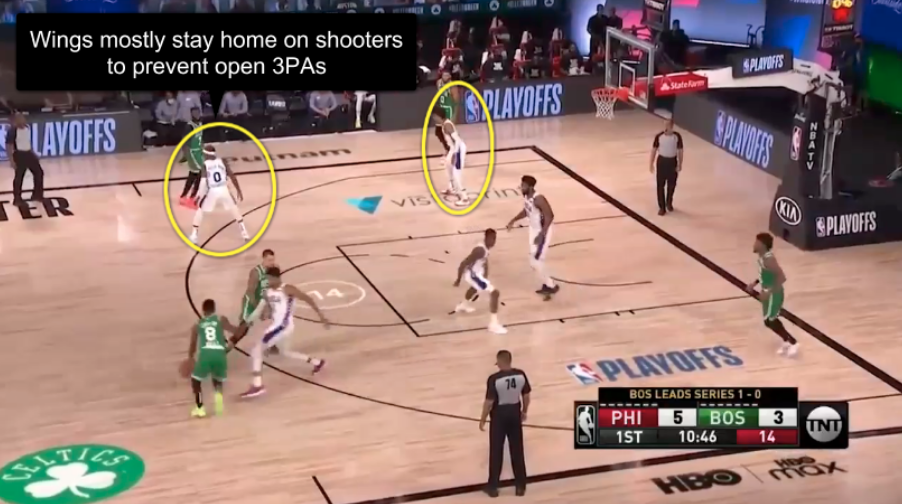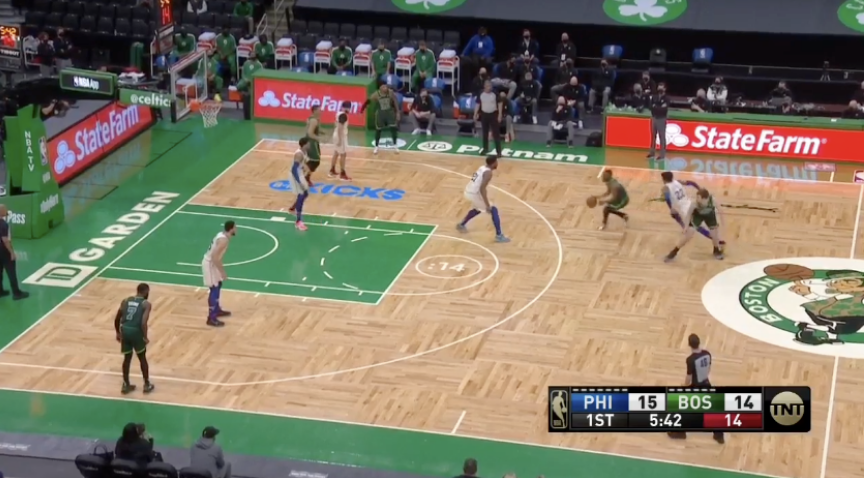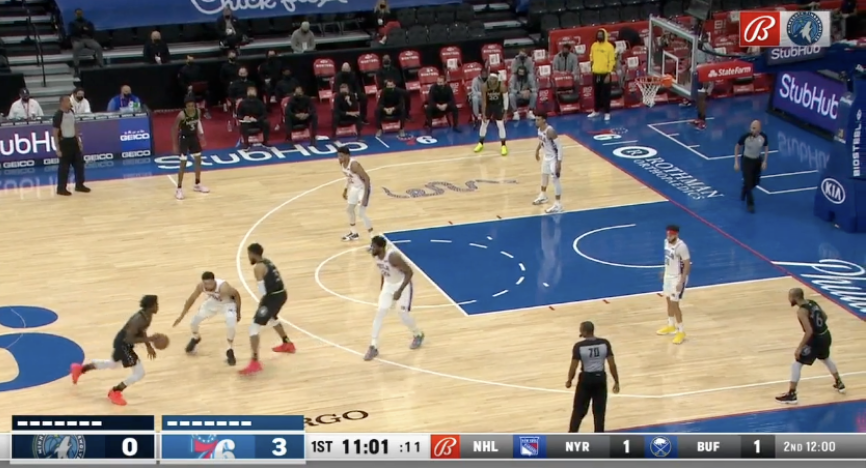
This Year's Sixers Defense Is Better Than Last Year's... Here's Why
The Sixers have the best defense in the league since the All-Star break.
Mike O’Connor is the best O’Connor in basketball writing. Previously of The Athletic, you can find Mike on Twitter @MOConnor_NBA. Mike’s writing is brought to you by Body Bio, supplements based on science, focusing on your gut and brain health. Get 20% off E-Lyte and all Body Bio products with promo code RTRS20 at Body Bio’s website.
Of the many reasons that last year’s Sixers team failed, the one that stands out above all is their failure to reach their potential on defense. Coming into that season, many had expected them to be historically great on that side of the floor, and they never came remotely close to that level. According to NBA.com/stats, the Sixers finished eighth in the league in defensive rating last year, .5 points per 100 possessions better than the Chicago Bulls.
And what’s more confounding about their lack of success last season is that despite making roster moves that would’ve led one to believe that they’d take a step back defensively -- namely, swapping Josh Richardson for Seth Curry -- the Sixers have been far better defensive this year than last year. At the time of this publishing, the Sixers rank second in the league in defensive rating behind the Lakers.
While their offense has also improved over last year’s, it’s the defense that has made the Sixers one of the best teams in the league, and it’s only gotten better as the season has gone on. Since the All-Star break, the Sixers have the best defensive rating in the league by a wide margin (103.8), which has helped them to go 11-4 in that stretch.
Here in this piece, I’ll be breaking down the things that have allowed the Sixers to take such a step forward on defense this year despite arguably having worse personnel than they did last season.
Stats courtesy of Cleaning The Glass unless noted otherwise.
In order to look at what’s different, one of the best places to start is with the Sixers’ defensive shot location data. Last season, the Sixers allowed an average percentage of shots around the rim (35.7% of attempts), among the fewest 3-point attempts (31.5%), and among the most midrange attempts (32.8%).
This distribution is a symptom of a few things, but mainly their pick and roll scheme. Take a look at their alignment, and you’ll quickly see how we get to these numbers.
Not only does Embiid drop way deep to incentivize midrange looks, but the off-ball wings also stay completely glued to shooters, which stops them from helping on drives, but does prevent open 3s.
This was all by design, and as you can see, the plan more or less panned out in their shot distribution numbers -- they prevented teams from taking 3s, they forced a ton of midrange looks, and they didn’t get killed around the rim. Sounds great, right?
Problem is, that shot distribution just isn’t maximizing a team with great personnel. You’ll hardly force any turnovers, you’ll allow a ton of stars to get hot from midrange, and because there’s no help to deter these drives, you’ll only be pretty good at defending the rim as opposed to great. Funneling teams into mid range attempts sounds nice on paper, but past a certain point, it comes at the expense of other things. Ultimately, Brown’s somewhat radical attempt at forcing mid range shots at any cost worked against him.
The contrast to this year’s shot distribution is pretty significant: the Sixers are allowing far more 3-point attempts (35.2%), which comes at the expense of fewer mid range attempts (31.3%), but helps lead to a lower percent of at-rim attempts (33.5%). In other words: in spite of allowing more 3s and fewer mid range attempts, the Sixers’ defense is much improved.
As to how they did it, you could probably guess. First off, Embiid is higher up on screens, which lowers the number of mid-range attempts.
And, just as importantly, the Sixers are having their wings offer far more help to prevent drives. Take a look at how aggressive Ben Simmons is here to stop Jaylen Brown in his tracks.
With that play alone, you can see the reason why these more aggressive schemes have been beneficial for the Sixers -- you allow your defensive playmakers to make an impact.
With the previous year’s scheme, there was an element of too much predictability. You leave a massive space open in the middle of the floor, and the offensive player is probably going to take a few dribbles and chuck a pull-up jumper. But with these new schemes, you force the offense to go through multiple layers of offense to get a shot attempt -- which allows you to help, communicate, and scramble, meaning your defensive playmakers have more of an impact.
Take this play, for example. Embiid is higher up on the screen, which forces Kemba Walker to kick the ball out and reset the offense. Last year, that would’ve been a pull-up jumper. After Walker resets, they scramble like all hell, force Boston to attack a moving defense, and Matisse Thybulle is able to get his hands on a steal.
The Sixers have so many players on this roster with excellent range and reaction time, that you’d be foolish to not unleash them and instead gift teams free mid-range jumpers in hopes of winning a math battle. Players like Danny Green, for example, have such a knack for digging down on the ball and generating turnovers, that you’re much better off giving them the opportunity to do so as opposed to making him stay glued to shooters to prevent 3s.
Of course, our focus here is on scheme, but the personnel deserves a ton of credit for the defensive improvement, as well. Even outside of pick and roll settings, the Sixers have demonstrated an ability to scramble with incredible levels of cohesiveness. Take a look at all the holes they plug in this possession against Boston.
With a team that can cover ground like this, you’re far better off running the more aggressive schemes that they’re running under Doc Rivers than the ones they ran under Brett Brown. Thanks to their adjustments, the Sixers are much better at forcing turnovers than they were last year -- 7th in the league compared to 22nd.
These adjustments aren’t anything overly drastic or innovative, but they were precisely the right schemes to put in place, and Rivers and his staff deserve a lot of credit for it. The Sixers went from a massively disappointing defensive team to one that is perhaps overachieving in a matter of one season. The fact that they’ve made such an improvement with mostly the same personnel is a great feat of coaching.










